Timber, metals and other wastes
There are no known figures for the volume of construction timber recycled in NZ, or what proportion it is of the overall waste stream. Issues that effect timber recycling and reuse in NZ generally relate to contamination, care in demolition, market demand, economic viability and chemical treatments.
Treated timber has been identified as a problem waste by some councils in New Zealand, because it does not safely decompose. Radiata Pine needs to be treated with chemical preservatives to make it durable when exposed to exterior conditions. Difficult chemicals such as formaldehyde are also found in some composite wood products such as MDF and chipboard again which affects reusability, recyclability and non-toxic decomposition.
Metal recycling is well established in NZ and has the highest recycling rates and export earnings of any other recycled material. It is thought that about 13% of metals recycled come from demolitions. Most of the metals recycled in NZ are ferrous. About a quarter of salvaged metals are sent overseas for recycling. Some issues in recycling metals are limited local markets and the use of difficult to recycle alloys in construction.
Timber, metals and other wastes student work
- Brian Berg 'H block' 2010
- Matthew King 'Interactive Wall' - Porirua City Council Prize 2009
- Scott Hohaia 'Fingerjointed Timber' - Porirua City Council Prize 2008
- Erica Brouard 'Rewall' - WasteMINZ Best Project Prize 2008
- Stephen Geuze 'Corn Cob Water Filter System' - WasteMINZ Best Project Prize 2007
- Lisa Olafsson 'Phyto-remediation of Treated Timber Waste' - WasteMINZ Prize 2007
- Matthew Webby ‘RDF’ Re-densified Fibreboard - WasteMINZ Highly Commended Prize 2006
- Ross T Smith ‘Sawment Bricks’ - Building Bricks 2003
- Ben Mitchell-Anyon Structural Beams - Highly Commended 2004
Brian Berg 'H block' 2010
Brian devised an easy to construct and take apart system using timber offcuts to create interior partition walls for the 'DIY' market.
Matthew King 'Interactive Wall' - Porirua City Council Prize 2009
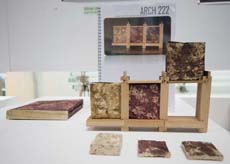
Matthew, a building science student designed an interior office partition wall system. The wall panels are constructed from saw dust and wood shavings and tyre shavings.
The wood shavings and saw dust make up the exterior layer and the tyre is a sound insulation barrier. The three layers of the wall panels are held together by a natural resign called hyde glue.
The frame of the wall system is constructed out of re-used timber in the form of modular elements. The wall frame contains no nails or screws. The wall system has been designed to be interactive, providing a chance for employees to personalise their surroundings.
The wall intends to increase creativity within the work place which may have some benefit in terms of increased productivity, while utilising several waste sources and minimising sound disturbance in office situations.
Scott Hohaia 'Fingerjointed Timber' - Porirua City Council Prize 2008
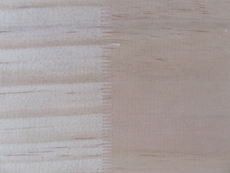
Porirua City Council's prize for the project with the most potential for waste minimalisation was presented by the Mayor to building science student Scott Hohaia. His idea was to take timber offcuts and finger joint the pieces into standard sized longer pieces of lumber for reuse in construction. The judges considered that the next step would be to devise an onsite finger-jointing machine to take care of offcuts on construction sites.
Erica Brouad 'Rewall' - WasteMINZ Best Project Prize 2008
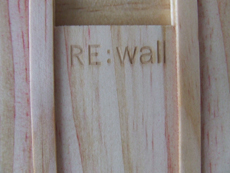
Erica Brouad, a second year architecture student won the WasteMINZ best project prize for her interior wall lining system 'Rewall' made of timber offcuts. Her system of panels where different lengths of thinly sliced timber offcuts are feed into brackets, provided a solution to a difficult waste problem by creating a beautiful and high value product.
Stephen Gueze 'Corn Cob Water Filter System' - WasteMINZ Best Project Prize 2007
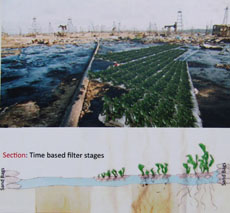
Stephen Geuze, an architecture student won the overall best project prize for his project tackling the difficult agricultural waste of maize cobs. He found that the maize cobs have the ability to filter heavy metals and other toxins from water and created effective and flexible water filtration scheme for polluted water ways.
Lisa Olafsson 'Phyto-Remediation of Treated Timber Waste' - WasteMINZ Prize 2007
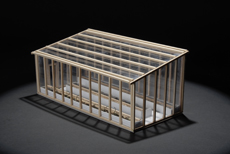
Lisa Olafsson, an interior architecture student looked into the unique ability of certain kind of fern to remediate arsenic from soils and used this devise an ingenious system for rendering treated timber waste safe.
Matthew Webby ‘RDF’ Re-densified Fibreboard - WasteMINZ Highly Commended Prize
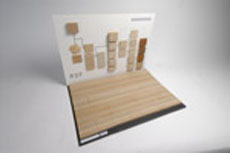
Matthew Webby designed a high-value product emphasising the decorative aspects of jointing in laminated MDF board off-cuts. This avoids the traditional covering up of MDF with finishes such as paint and prevents MDF off-cuts going to landfill where the chemical make up of the glues tends to be problematic.
